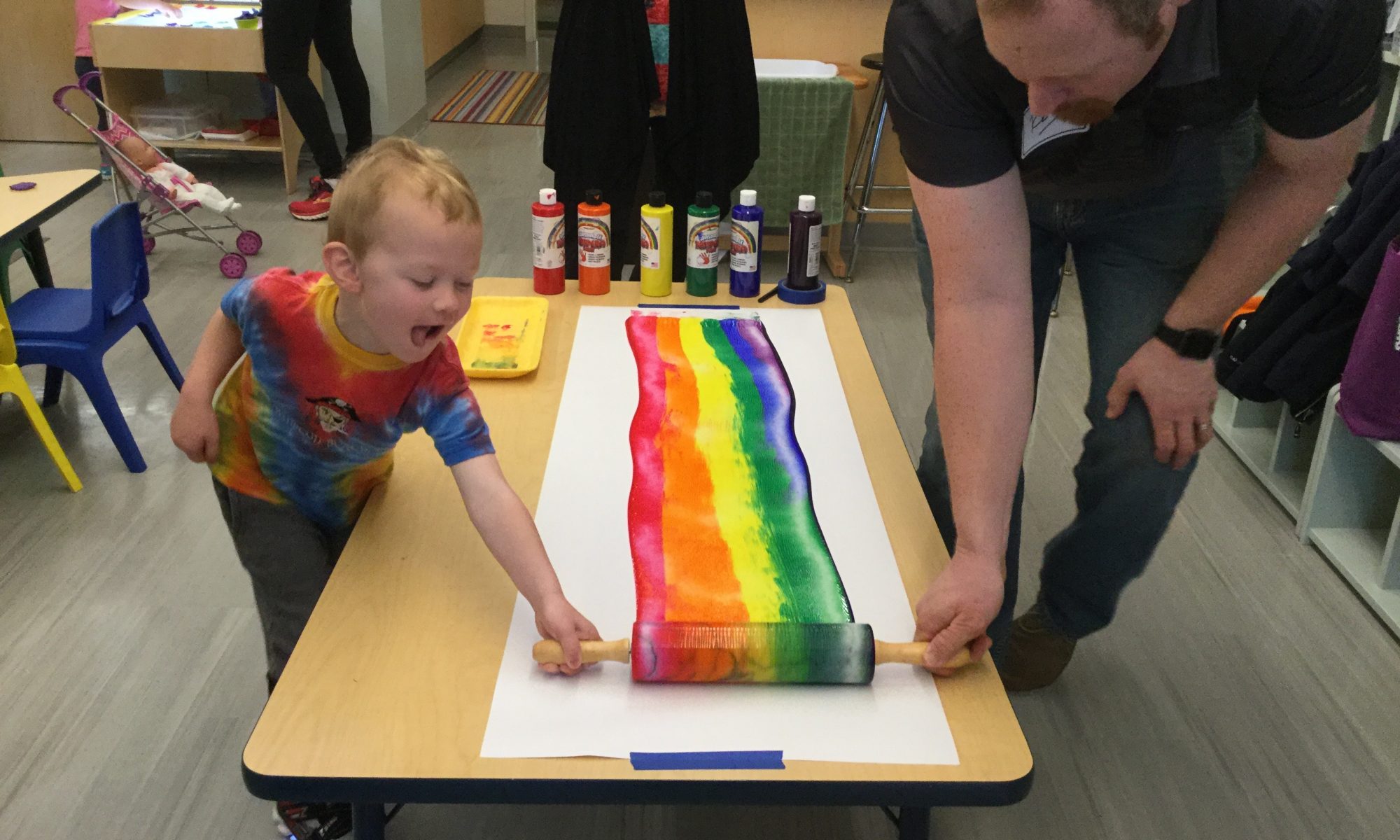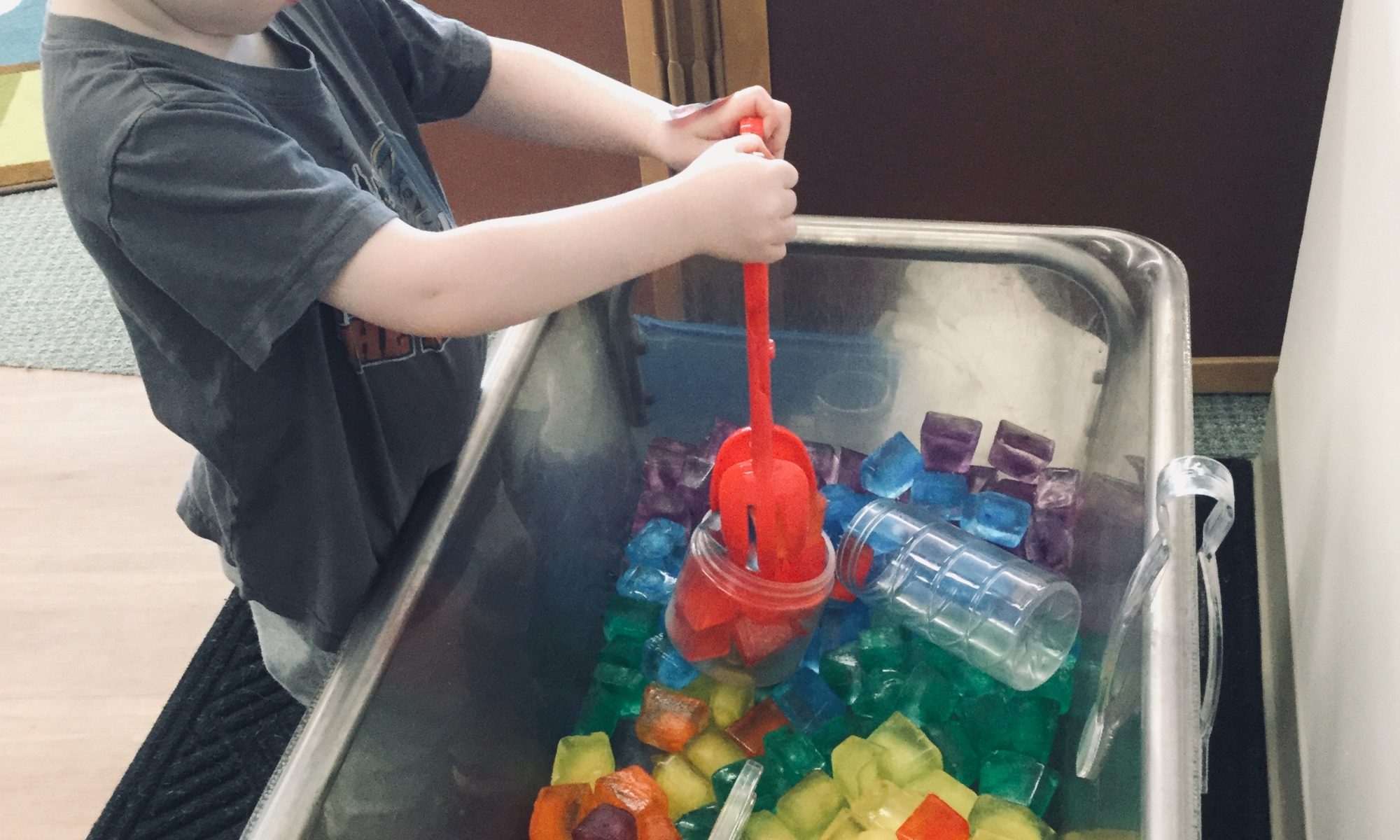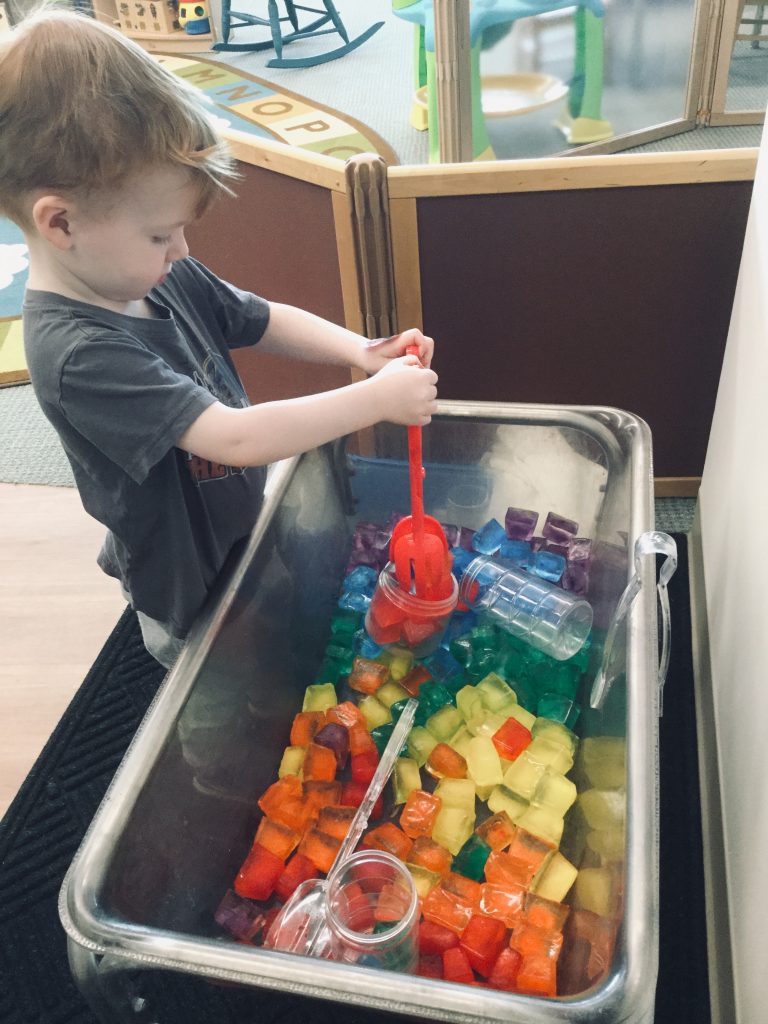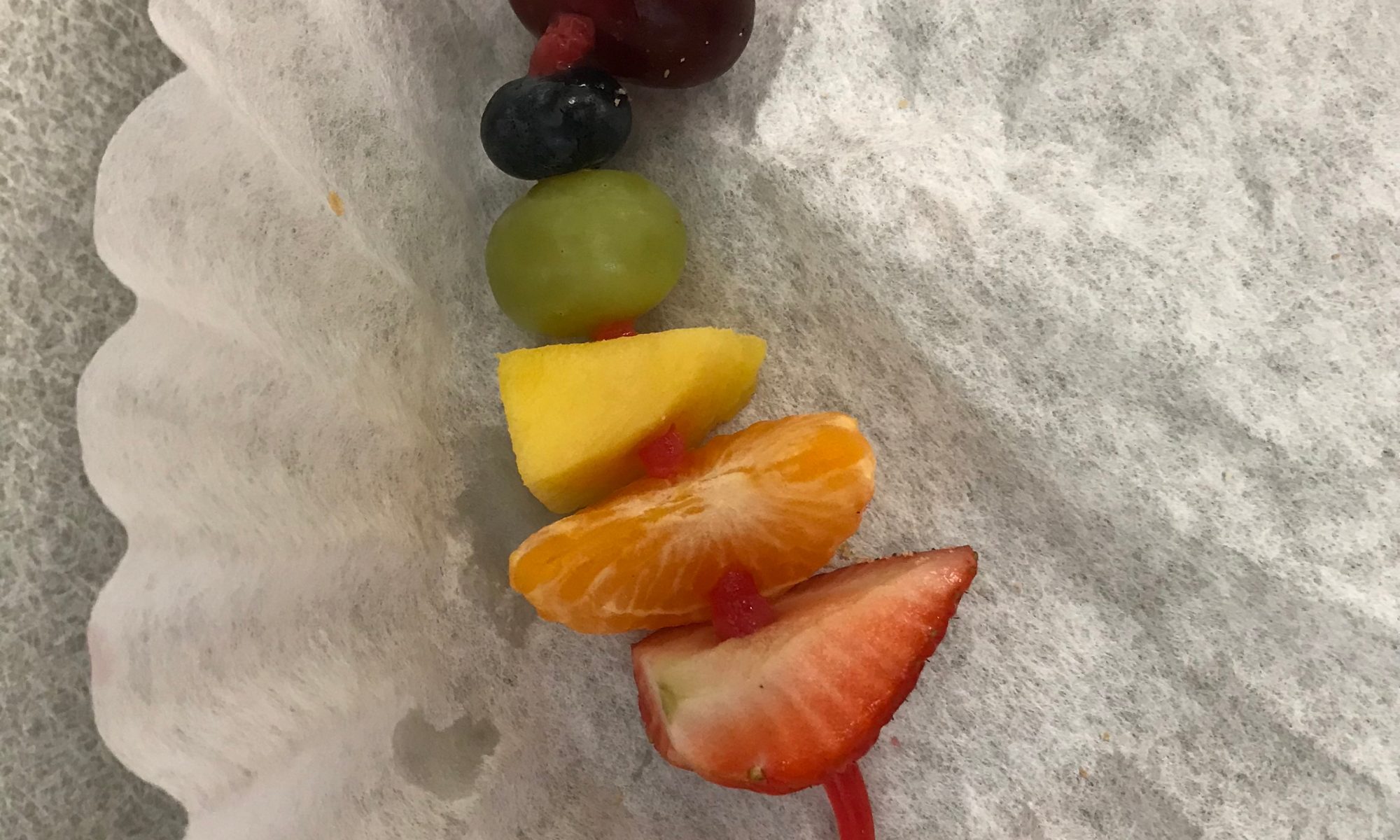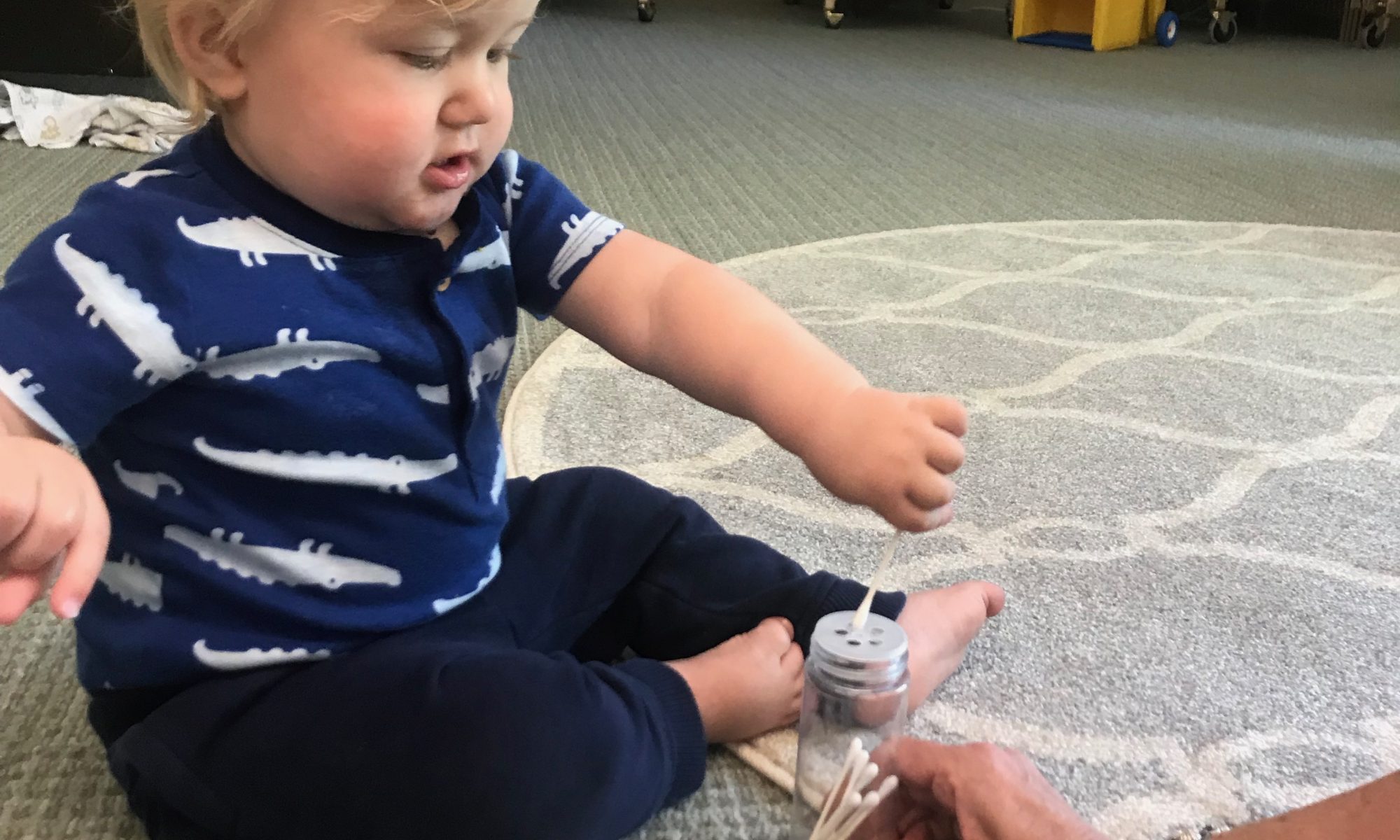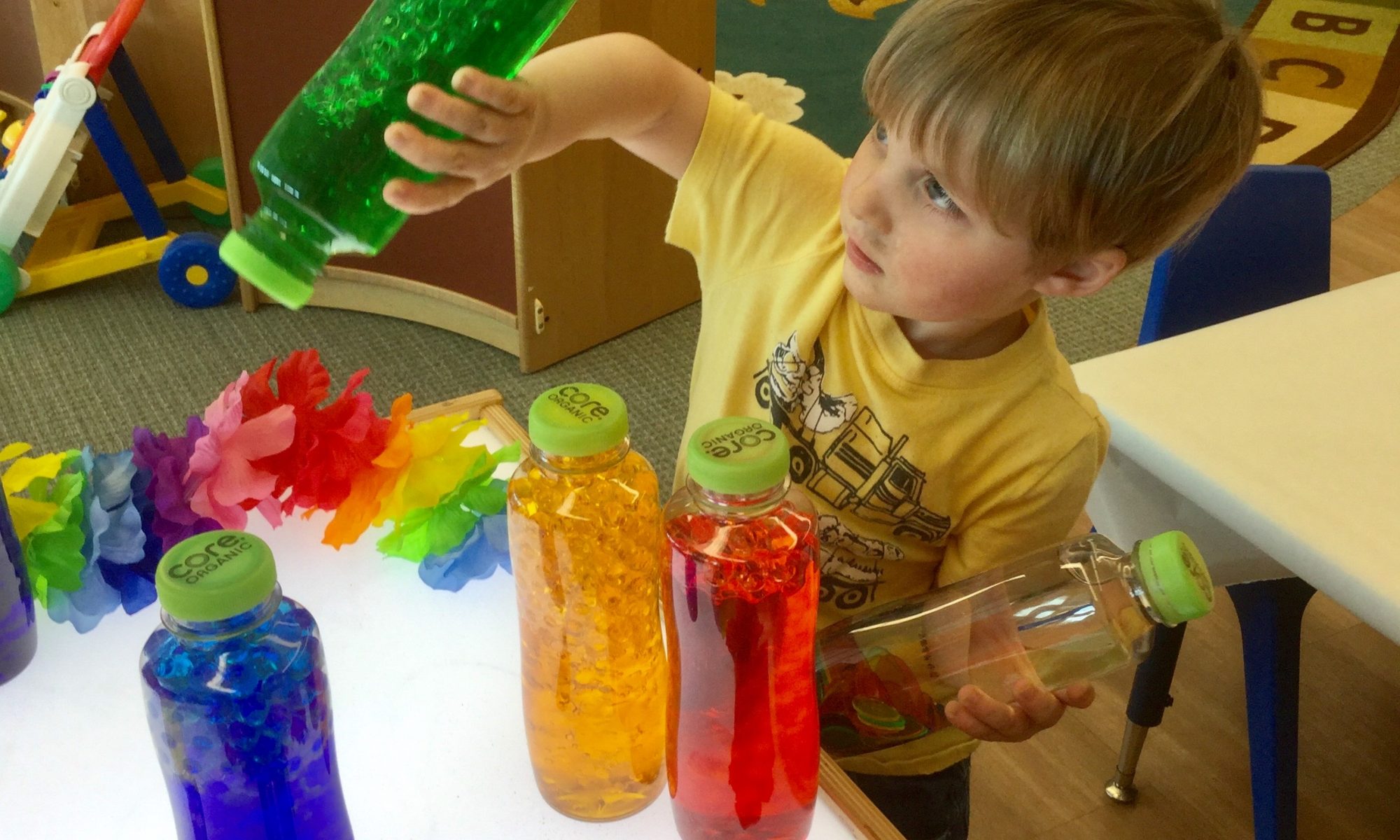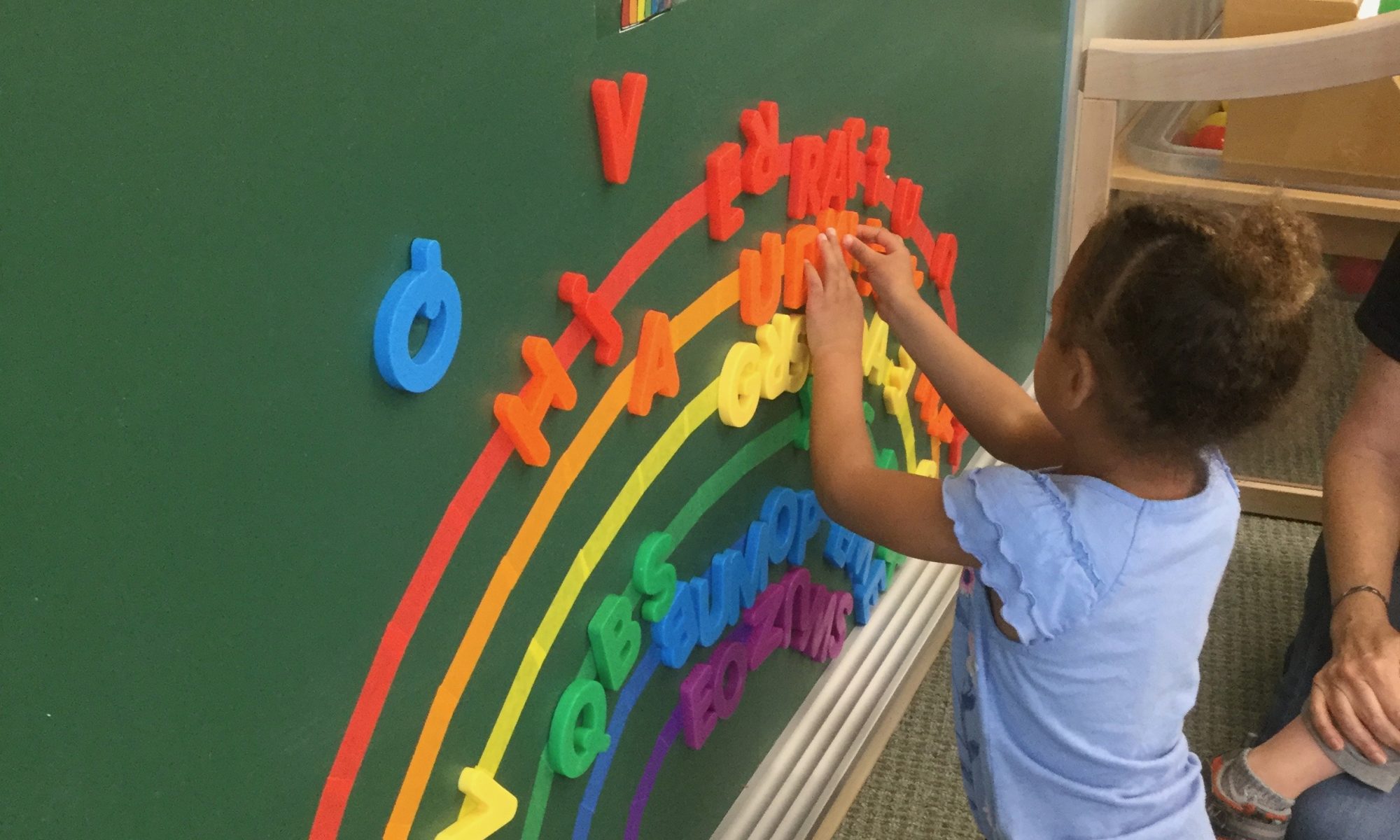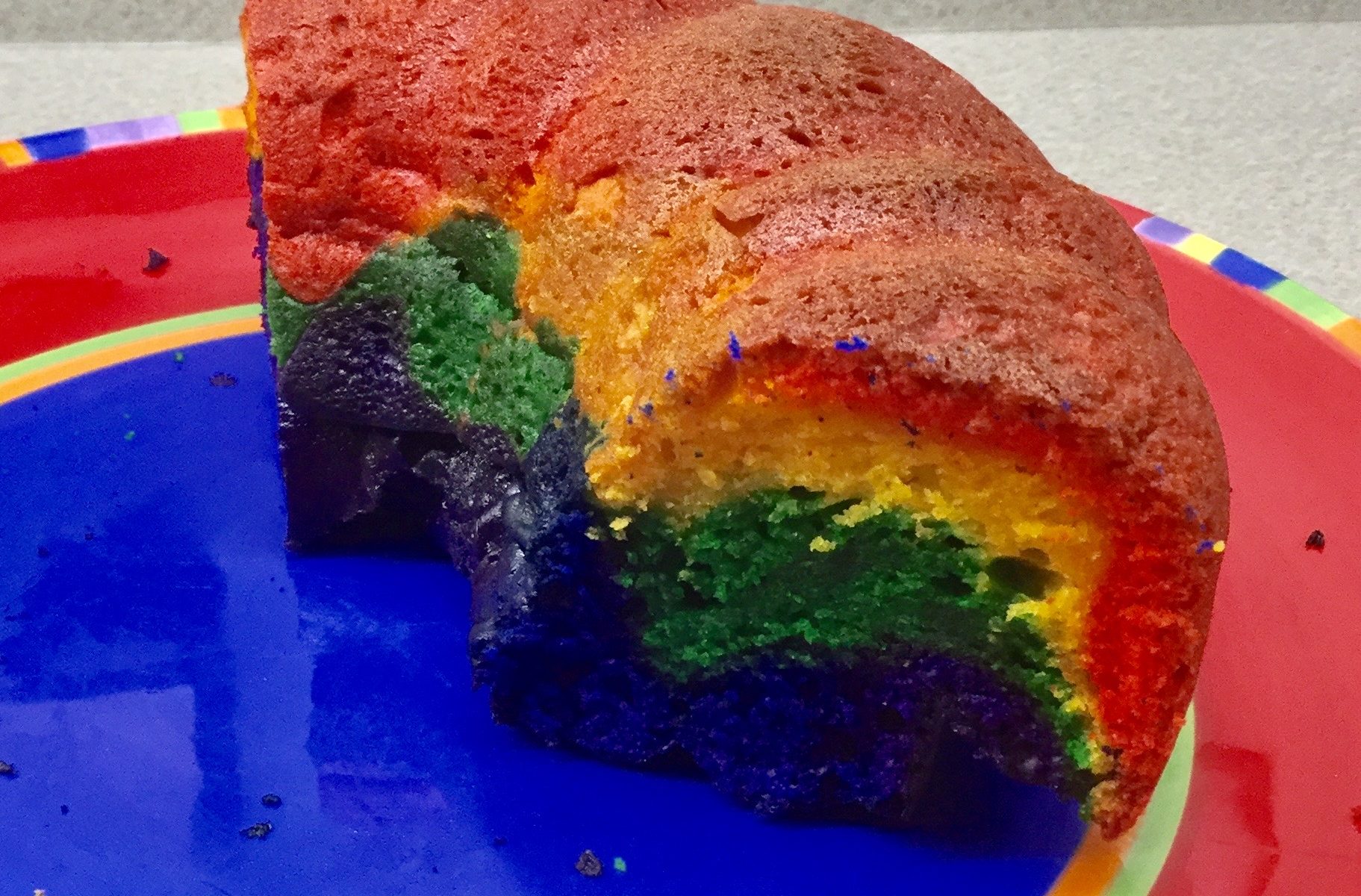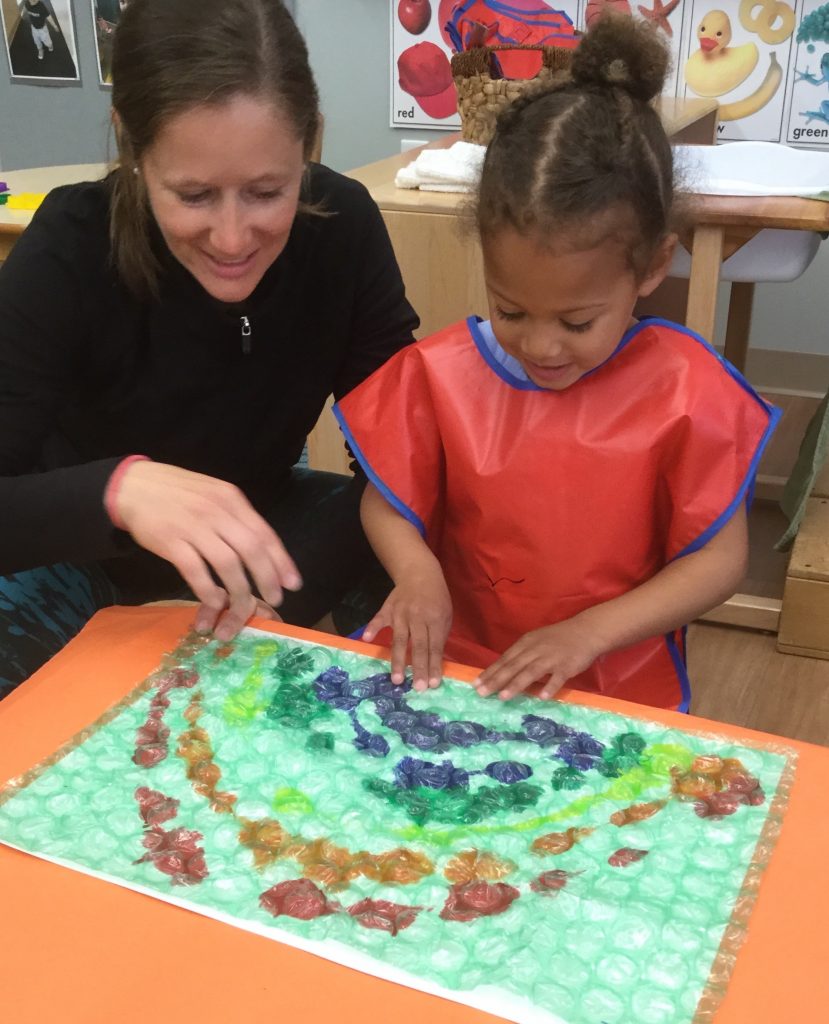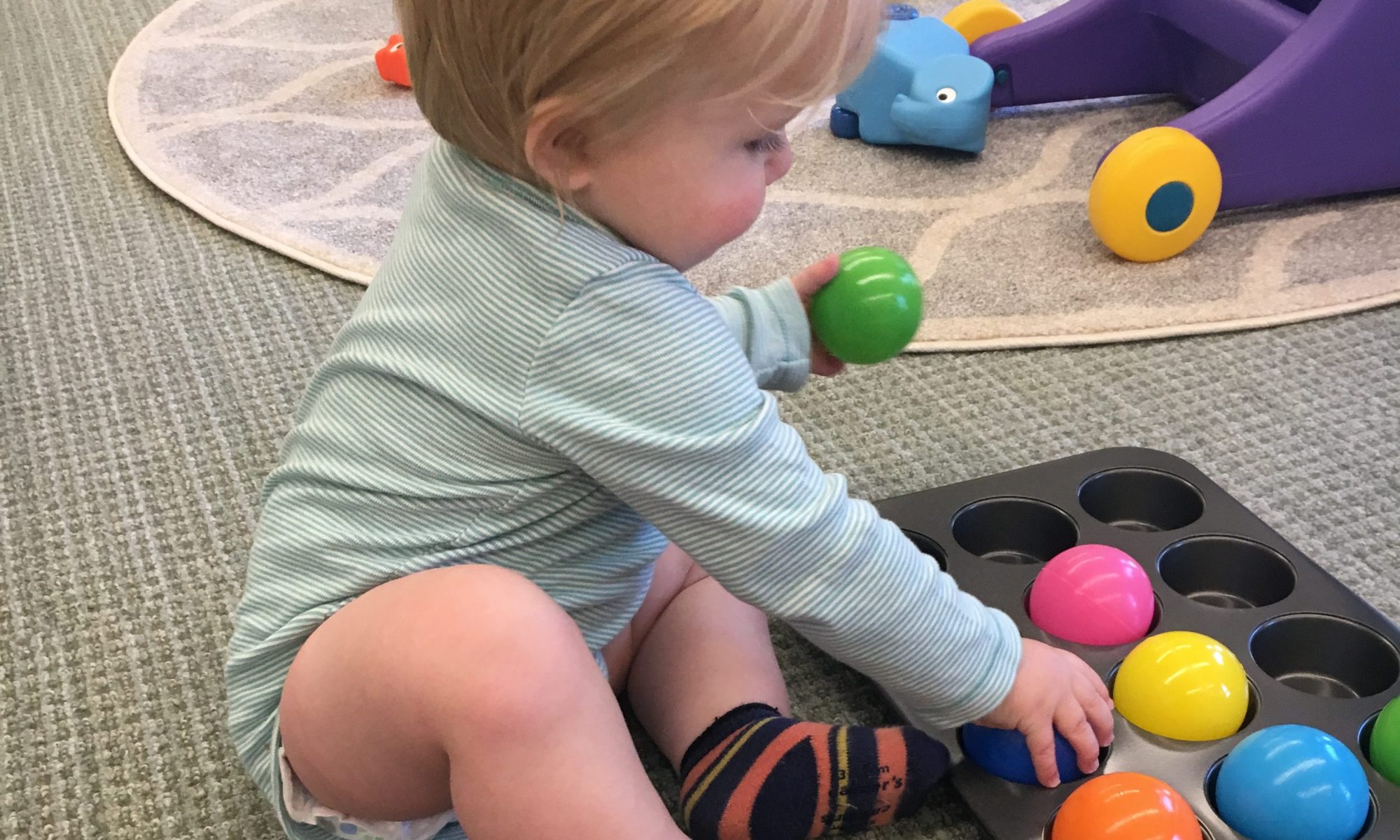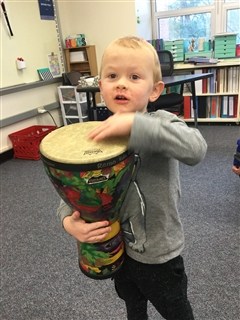By Dorothy Halverson, Early Childhood Principal
From the soft chimes inside their cuddly, soft toys to the full orchestration of Disney’s Fantasia, children learn how to distinguish different sounds, rhythms, and melodies. Music is innate to every child, and it is filled with Godlike qualities—tenderness, precision, beauty, joy, unity, accuracy. And since these qualities are from God, no one can lack them. Music educates the whole man and ignites all areas of development. No one is without his or her own sense of harmony and the ability to express it. Each of us comes with our own instrument, and each of us can learn to use it with freedom, joy, and fulfillment.
Children learn to be musical just as they learn to talk, walk, and dress themselves. They learn through example, trial and error, imitation, and play. Even if you feel you aren’t a great musician, there are lots of ways that you can nurture and help your child develop the musical skills that will enliven and enrich his life and will lay the foundation for musicianship.
Infants respond beautifully to music. As you dance with an infant in your arms, take her to the changing table, singing, “This is the way we change your diaper,” or hum a soothing lullaby to comfort her and help her fall asleep, you are building a relationship that fosters trust. Sing simple, short songs in a high, soft voice. Try making up one or two lines about bathing, dressing, or eating to sing to them while you do these activities. Just start putting to melody some of the thoughts and words that come to you, and you’ll have a song. Children love to hear songs with their names and to laugh at the silly songs you make up about what they’re doing. Sing as you hold and play with your baby—she will love watching your mouth. Recorded music can’t possibly substitute for YOU, whether the opportunity happens at bedtime, while you’re picking up toys together, or traveling in a car.
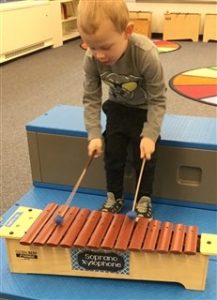
Young infants enjoy toys that make musical sounds. Hang musical mobiles, and give babies wrist and ankle bells to hold. Babies’ random movements soon become intentional as they learn that they can make sounds by moving things. Offer toys that make sounds as they are used, such as balls with bells inside or push-and-pull toys that make musical sounds as they roll across the floor.
Mobile infants use their bodies as their first rhythm instruments, but you will also want to offer other simple rhythm instruments. Possibilities include drums, xylophones, rattles and shakers, tambourines, clackers, maracas, and wood blocks. These allow children to create and respond to music as they bang, ring, swish, and click. Make sure that anything with small objects inside or attached, such as a shaker or bell, is secure and does not present a choking hazard.
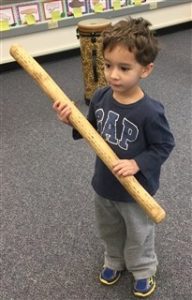
As your child’s language skills improve, he will join you as you sing. Sometimes the child will repeat sounds over and over, such as “da-da, da-da, da-da.” Your child may half-babble and half-talk as he sings a familiar song such as “Baa, Baa, Black Sheep.” With your child’s increasing balance and physical coordination, he will enjoy playing simple rhythm instruments and moving to the beat. You may want to make your own instruments. For example, drums can be made from oatmeal containers and cymbals from metal pie pans. Make rattles and shakers by filling containers with rice, macaroni, or dried beans and fastening the containers very securely. Create a rain stick by using a paper towel tube, some rice, and tape. Turn pots and pans upside down and offer wooden spoons. Observe as your child experiments with different rhythms and sounds.
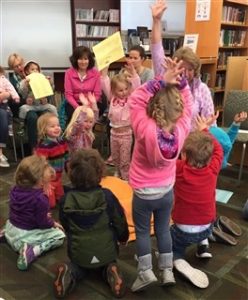
As you interact with your mobile baby, you can promote both his pleasure in and learning from music and movement. Here are some ways to help your child focus on his experiences:
- Encourage your child to respond physically to music by swaying and moving slowly when the music is slow.
- Identify different sounds, like a clock ticking or the beating of a drum. Mimic or imitate mechanical sounds. This will encourage him to experiment with and control his voice.
- Teach simple fingerplays, such as “Open, Shut Them” and “The Wheels on the Bus.”
- Vary the speed at which you chant rhymes. Sing “Pat-a-Cake” very slowly and then more quickly and invite your child to tap his outstretched hands in your hands to the beat.
- Move with your child to the beat; bounce him on your knee or in your lap as you chant “Bounce and bounce and bounce away. Bounce and bounce and bounce all day. Bounce high, bounce low. Bounce and bounce and bounce we go!”
Toddlers love to dance and move to music. They are fascinated by the nonverbal sounds they can make. They continue to sing and to enjoy music and fingerplays as social experiences. Share the fun of dancing, marching, and singing together. Use music and movement experiences to build a positive relationship—“Let’s hold hands and stomp through the leaves together.” The key to toddler music is the repetition of songs, which encourages the use of words and memorization.
Two-year-olds love rhythm and repetition. They have become good listeners and are responsive to music with complex patterns. They move their whole bodies in different ways to various kinds of music, jumping, bouncing, falling, and swaying. They love to twirl and fall like autumn leaves and spinning tops, and they begin to sing some of the lyrics of familiar songs. You will notice that your child can fill in words when you pause, especially when the songs include rhyme and repetition. Encourage your child to focus on the beat by inviting him to clap, stomp, march, or drum to the music’s beat. He may also enjoy creating original melodies or new verses for his favorite songs.
Music and movement experiences play an important role in language and literacy development. Songs can be used to promote an awareness of sounds and to encourage children to experiment with language. Songs, rhymes, and fingerplays are wonderful ways to help children extend language and build vocabulary. As you live music and enjoy it with your child, you’ll see its influence in areas such as memory, speech, listening, coordination, confidence, creativity, and self-control. These processes demand and develop character qualities such as courage, self-discipline, obedience, focus, decisiveness, selflessness, and inner stillness.
The aim in living and teaching music really is to find the nobility in man by involving him in the search for the beautiful, and as you and your child grow together, you’ll enjoy a new and deepening bond with him—one to be cherished and treasured.

